Navigating global compliance: Key trends and challenges
The ever-evolving landscape of global compliance is characterized by a growing number of legal requirements, ethical standards, and international norms. In today’s interconnected world, businesses and organizations are expected not only to comply with the laws of their home countries, but also to adhere to a myriad of international regulations and standards. Compliance has transformed from being a mere business function to a strategic cornerstone, reflecting an organization’s commitment to lawful and ethical behavior.
The concept of global compliance goes beyond traditional regulatory frameworks, enveloping a broad spectrum of areas, including finance, data protection, labor standards, and environmental sustainability. As the global marketplace expands, so too does the reach of compliance, impacting industries from manufacturing to services, from tech giants to non-profits. Understanding this intricate system is not just an academic exercise; it is a practical imperative for any business aiming to thrive in a global economy.
Navigating the global compliance maze requires a keen understanding of its foundations. It is built upon the bedrock of international law, customized by regional directives, and further refined by local legislation. The challenge lies in the deciphering of these layered complexities and the effective implementation of necessary measures to ensure compliance is successfully navigated.
Related articles:
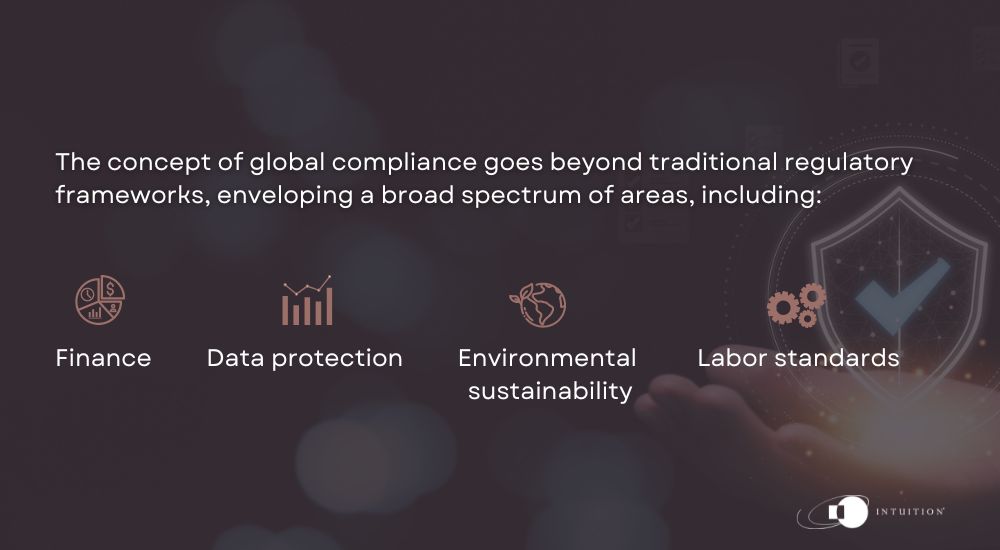
Importance of compliance in global businesses
Compliance is not merely a defensive strategy; it is a proactive measure that can offer competitive advantages to businesses that embrace it. Organizations that uphold high standards of compliance are often viewed as more trustworthy by customers, partners, and investors. This trust translates into tangible benefits such as increased market access, smoother partnerships, and often, preferential treatment by regulators.
Moreover, compliance serves as a safeguard against the financial penalties and reputational damage that can arise in the event of non-compliance. The costs associated with violations of laws and regulations can be exorbitant, not only in terms of fines and legal fees, but also in the loss of business opportunities and customer loyalty. In extreme cases, non-compliance can lead to the temporary or permanent shuttering of entire business operations.
The importance of compliance is underscored by its ability to influence corporate culture. When an organization prioritizes compliance, it fosters an environment of integrity and accountability. Employees in such organizations are more likely to be mindful of ethical considerations and the implications of their actions, thus reducing the risk of misconduct.
[What is Financial Compliance?]
Understanding global regulatory changes
Laws and regulations are dynamic, often responding to socio-economic shifts, technological advancements, and international events. Compliance managers must have their fingers on the pulse of these changes to steer their organizations clear of potential pitfalls.
Recent years have witnessed significant regulatory shifts in areas such as data privacy, with the General Data Protection Regulation (GDPR) in the European Union setting a new benchmark for data-handling practices. Similarly, anti-money laundering (AML) and counter-terrorist financing (CTF) regulations have seen heightened emphasis, with the Financial Action Task Force (FATF) updating its recommendations to combat illicit financial flows.
Understanding these changes demands a multifaceted approach. It requires constant monitoring of legislative developments, the interpretation of complex legal texts, and the translation of these into actionable policies and procedures. Moreover, the global nature of these changes often requires harmonization of compliance practices across different jurisdictions, adding layers of complexity to the compliance function.
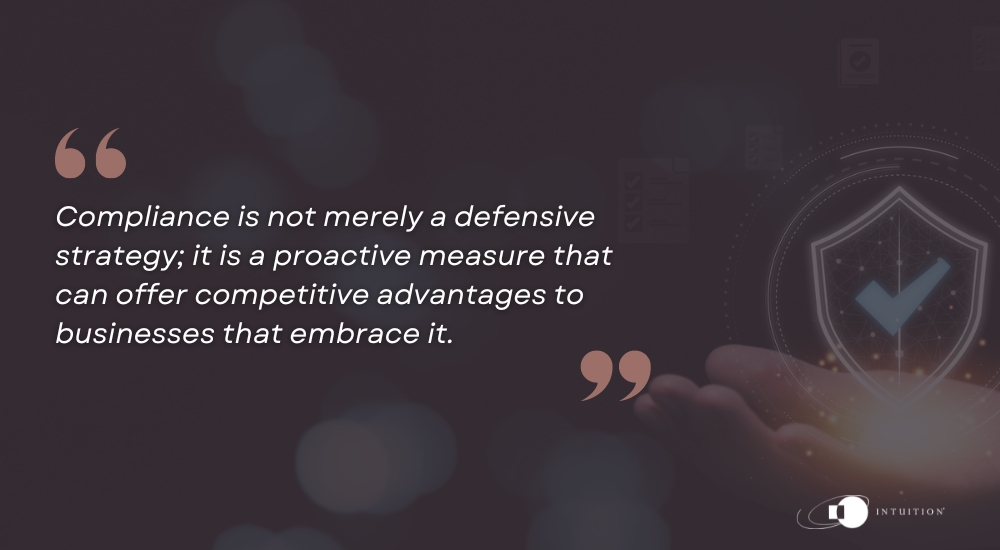
Technological advancements impacting compliance
Technology has been a double-edged sword for compliance. On the one hand, it has introduced new risks and complexities; on the other, it has provided innovative tools to enhance compliance efforts. The digital age has brought with it cyber threats, data breaches, and new forms of financial crime, all of which require robust compliance mechanisms to counteract.
Blockchain technology, for instance, offers a promising avenue for enhancing transparency and traceability in transactions, which is invaluable for AML and Know Your Customer (KYC) compliance. Similarly, artificial intelligence (AI) and machine learning are revolutionizing the way organizations conduct compliance monitoring and risk assessments by sifting through vast data sets to identify patterns indicative of non-compliant behavior.
However, the rapid pace of technological change also presents challenges for compliance. As new technologies emerge, regulators may struggle to keep up, resulting in a lag between the advent of technology and the establishment of regulatory frameworks. Compliance managers must not only contend with current regulations, but also anticipate future legislative landscapes shaped by ongoing technological innovation.
Emerging risks in global compliance
The global compliance landscape is fraught with emerging risks that can catch organizations off-guard. These risks often stem from changes in the geopolitical climate, advances in technology, and shifts in societal norms and expectations.
One of the most pressing emerging risks is the challenge posed by threats to cyber security. As businesses become increasingly reliant on digital infrastructures, they become more vulnerable to cyber-attacks, which can compromise sensitive data and disrupt operations. The rise of sophisticated cyber threats necessitates equally sophisticated cyber compliance strategies.
Another area of emerging risk is the environmental, social, and governance (ESG) criteria, which are becoming increasingly significant for consumers, investors, and regulators. Organizations are now expected to demonstrate compliance with both environmental regulations and social and governance standards that reflect their corporate responsibility.
Furthermore, the global compliance landscape is witnessing the impact of political instability and economic sanctions. Changes in political regimes or international relations can result in the rapid implementation of sanctions or trade embargoes that have immediate and far-reaching implications for compliance.
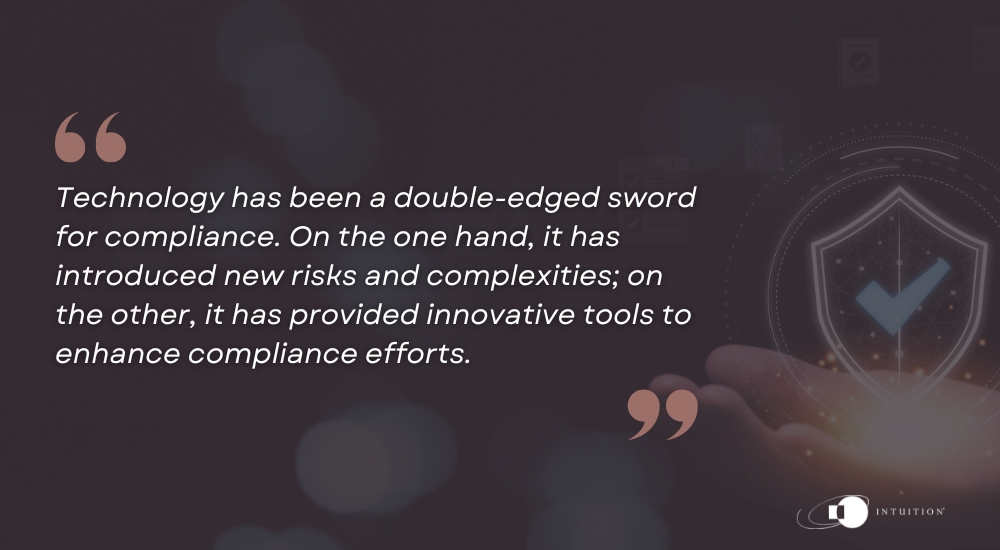
Challenges in navigating the dynamic compliance landscape
Navigating the dynamic compliance landscape is a task that requires agility, foresight, and resilience. Compliance managers face the challenge of keeping pace with the rapid succession of regulatory changes across various jurisdictions. This necessitates a continuous investment in legal expertise and compliance training to ensure that personnel remain well-versed in the latest compliance requirements.
Another challenge lies in the delicate alignment of compliance practices with business objectives. Often, there is a tension between the need to comply with regulations and the drive to achieve business goals. Balancing these at times conflicting priorities requires a nuanced understanding of both the business landscape and the regulatory environment.
Additionally, the diversity of regulatory requirements across different countries and jurisdictions creates a complex web for global businesses to interpret and navigate. Ensuring consistency in compliance practices while accommodating local nuances is a delicate balancing act that demands meticulous planning and execution.
Strategies for ensuring organizational compliance effectiveness
To ensure organizational compliance effectiveness, businesses must adopt a strategic approach that is both comprehensive and adaptable. One key strategy is the implementation of a robust compliance management system that provides a structured framework for managing compliance obligations. This system should encompass policy development, risk assessment, training, monitoring, and reporting mechanisms.
Investing in compliance technology is another strategy that can yield significant dividends. Automated compliance solutions can streamline processes, reduce the likelihood of human error, and provide real-time insights into compliance risks. Advanced analytics and AI can further enhance the ability of organizations to detect and prevent non-compliant behavior.
Developing a culture of compliance within the organization is equally important. This involves fostering an environment where compliance is viewed not as a burdensome and time-consuming obligation but as an integral part of the business ethos. Engaging employees in the compliance process and incentivizing compliant behavior can go a long way in embedding compliance into the organizational fabric.
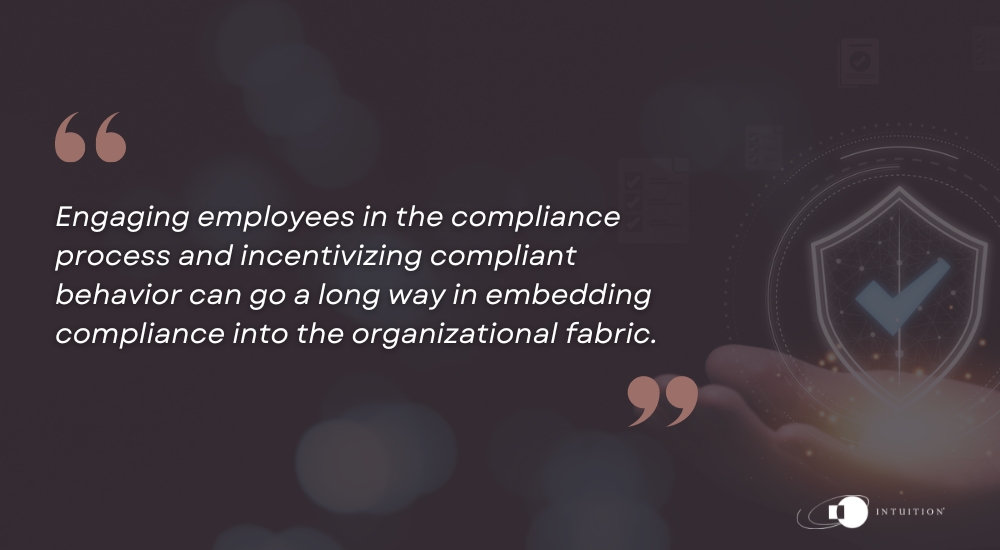
Organizations successfully navigating compliance challenges
Examining case studies of organizations that have successfully navigated compliance challenges can provide valuable insights into best practices and strategies. Such case studies often reveal a common thread: a proactive and integrated approach to compliance management.
For instance, a multinational corporation facing complex tax compliance issues across various jurisdictions may implement a centralized tax compliance system that can automate tax calculations, ensure accurate reporting, and provide visibility into the tax compliance status across all operations.
Another example is a financial institution that has successfully combated money laundering by leveraging advanced analytics to monitor transactions. By implementing a system that flags unusual patterns and conducts due diligence checks, the institution can proactively address potential compliance issues before they escalate.
These case studies underscore the importance of a strategic approach to compliance that leverages technology, engages stakeholders, and aligns with business objectives.
Future trends in global compliance
As we look forward, several future trends emerge. One such trend is the increasing emphasis on data-driven compliance, where decision-making is heavily reliant on data analysis and predictive modeling. This will enable organizations to identify potential compliance issues before they arise and to tailor their compliance programs more effectively.
Another trend is the growing interconnectivity between compliance and other business functions, such as risk management and corporate governance. This reflects a holistic view of compliance as part of a broader ecosystem that supports sustainable business practices.
Finally, greater international cooperation in the enforcement of compliance regulations is likely to become the norm. This may manifest in the form of shared standards, cross-border investigative powers, and collective responses to non-compliance on a global scale.
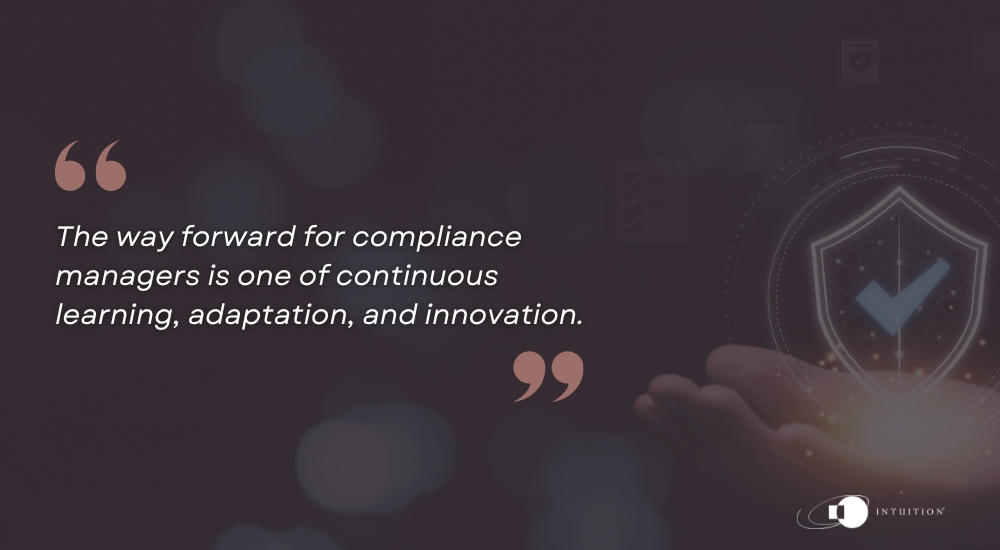
Conclusion: The way forward for compliance managers
The way forward for compliance managers is one of continuous learning, adaptation, and innovation. Managers must remain vigilant to the ever-changing compliance landscape, proactive in their approach to managing risks, and collaborative in their engagement with both internal and external stakeholders.
The key to success in global compliance is the recognition that it is not a static target but a moving one. Compliance managers must not only respond to current challenges, but also prepare for future trends. By embracing the complexity of global compliance, they can actually transform it from a daunting and tedious obstacle into a strategic asset that propels their organizations forward.
For those who must navigate these waters, the journey is both challenging and rewarding. Compliance is no longer a back-office function; it is a front-line imperative that shapes the reputation and viability of businesses in the global marketplace. The future of global compliance is one of opportunity for those who are ready to lead the charge.


